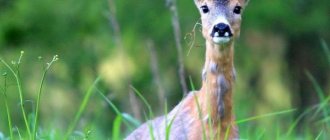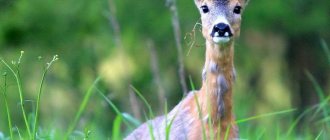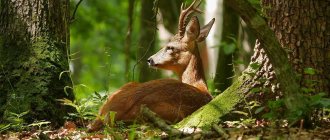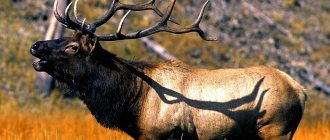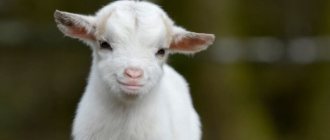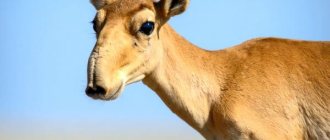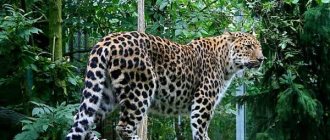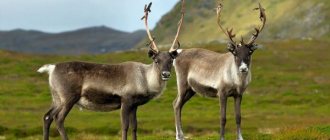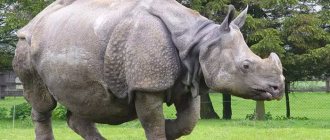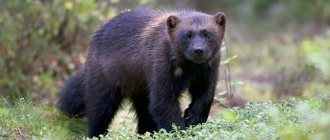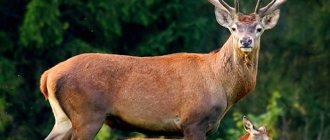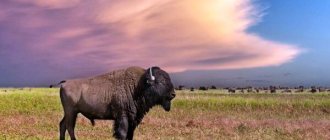In different languages, the name of the Siberian roe deer sounds differently: in English - Siberian Roe Deer, in German - Sibirischen Rehwild, in Spanish - Corzo Siberiano, in French - Chevreuil de Sibérie. It is often called eastern. But few people know that in the family of these beauties there are other types of roe deer. There are five of them in total; for the purpose of proper accounting, the SCI book of records combines them into two: Siberian roe deer (three options - pygargus, caucasicus, tianschanicus) and Chinese. Two subspecies of the latter are known – bedfordi and melanotis. We will dwell in more detail on the first option, the most typical representative of this artiodactyl specimen.
Siberian roe deer
Capreolus pygargus is a small, elegant reddish-brown deer. This color is typical for the animal during the summer. Then the roe deer turns gray, pale brown or even black - in the winter. Her tail is very small, and in cold weather it is completely invisible or completely absent. Males are larger than females and have short horns, usually with three points. The canopy lasts from October to January. A new pair, which begins to grow rapidly, is immediately covered with a “velvet” of coated skin, which supplies blood to the growing horns.
You can see these animals in the northeastern regions of Asia: in Mongolia, on the Korean Peninsula, in the regions of Eastern Tibet, Northeastern China, and the Tien Shan. A large population of representatives of this deer species lives in the southern part of the West Siberian Plain. In particular, the largest roe deer habitat is located in the Kurgan region. The nature of these places is perfectly suitable for its existence and reproduction.
Hunting
There are several ways to hunt Siberian roe deer during the period of pair formation. The most popular method can be called stealth hunting. At this time, hunters discover places where male roe deer are most likely to appear, and lie in wait for the animals. For this purpose, special places, stealths are selected, or towers are used in which the hunter waits until the animal comes out for a sure shot. More active hunting with a huntsman can bring pleasure to a truly passionate hunter. But for this it is best to use the help of a ranger and have a car with good cross-country ability.
These animals, which live mainly in forest-steppes, always try to stay close to water sources, in areas of mixed or deciduous forests. They try to spend time on the outskirts of forest clearings and forest edges. When the sun rises or sets, hunters and rangers travel around the habitats of animals in order to identify areas that will provide the best conditions for hunting.
During the mating season, roe deer do not move sufficiently thoughtfully and carefully, and if the hunter sees a suitable target, then immediately upon detection he may begin to approach or hide the animal. In order to ensure the most successful approach path, each hunter must, first of all, take into account the direction of the wind. Siberian roe deer have a developed sense of smell and can smell a person quite easily. Therefore, in the process of this hunt, the attention of the hunter and his shoes always play an important role. The Siberian roe deer tries to spend as little time as possible in dense forest conditions, where trees and bushes make running difficult. Therefore, the animal can be seen quite easily in open space. Roe deer have good eyesight and can spot a hunter several tens or hundreds of meters away, so when tracking this animal, it is best to try to stay behind bushes, trees and grass.
The most successful shooting is considered to be shooting at a male with a rifled gun from a distance of no more than two hundred meters. In this case, it is best not to rush, but to wait for the moment when the animal turns sideways to the hunter. It's best to shoot at the chest. If an animal is wounded in the stomach, it can go quite a long distance. The hunter's chances of finding a wounded roe deer are slim. Experienced hunters recommend choosing the M700 Remington or Magnum 7 mm caliber. It is this weapon that will allow you to get good results in the process of such a hunt.
Biology and breeding season
The Siberian roe deer can be active for 24 hours, but its main peaks of playfulness are at dawn and dusk. You can meet the animals either alone or in small mixed groups. In winter, as a rule, they form large groups, since it is easier to forage together. The diet of roe deer is quite wide, its diversity depends on the time of year and includes leaves of bushes, trees, weeds, acorns, mushrooms, coniferous shoots and ferns. The breeding season, or "rut", occurs from mid-July to August. During this time, male roe deer become very aggressive and actively defend their territory. Fights between males occur frequently. They represent a clash between two males, who block each other with their horns, pressing and twisting them. Such fights can result in serious injury and even death.
Once won, the winner can then mate with the female. Courtship involves winning the chase of a female for a period of time until she is ready to mate. Although the latter occurs in August, the fertilized egg does not begin to develop until late December or early January. Roe deer give birth to one to three cubs, most often in May-June. Very often you end up with twins. After birth, roe deer leave their offspring alone for six weeks. Their inconspicuous color helps to camouflage individuals for a while, but mortality rates from predators are still high. After this time, the cubs remain with their mother. Both sexes disperse, but females tend to stay closer to the younger generation than males.
Lifestyle
Roe deer exhibit a daily periodicity of behavior: periods of grazing and movement alternate with periods of chewing food and rest.
The peak of activity occurs in the morning and evening hours, when the animals go out to feed. They spend the rest of the time on bedding areas, which are usually located along the edge of clearings in forest areas. The bed itself is a small piece of land, which is cleared of snow, grass and leaves by the hooves. Siberian roe deer stay in small groups, consisting of a male and several females, and only in winter can they form larger herds, up to 30 animals, which break up again by spring.
In general, the daily rhythm of life of a roe deer is determined by many factors: season of the year, time of day, natural habitat conditions, degree of disturbance, etc. For example, in populations experiencing strong anthropogenic pressure, the activity of roe deer is limited to twilight and night hours.
In spring and summer, animals are more active at night and at dusk, which is partly due to the activity of blood-sucking insects, in winter - at the beginning of the day. On hot summer days they feed less frequently than on cool and rainy days. In winter, in frosty weather, feeding, on the contrary, becomes longer, compensating for energy costs. A small amount of precipitation does little to disturb the roe deer, but during heavy rains or heavy snowfalls they hide in shelters.
Summer period. Covers the time from March to the end of August. At this time, roe deer are most territorial and aggressive. In March–April, adult (over 2–3 years old) males occupy their territories, and females, in the last month of pregnancy, move to their birth areas. It should be noted that the territorial structure of roe deer is very rigid - once having occupied some territory, the roe deer usually returns to it from year to year.
The territory of a male, depending on the living conditions in a particular biotope, varies from 2 to 200 hectares. Normally, the territories of neighboring males practically do not overlap and only at high population densities do they partially overlap each other in the area of feeding areas. The boundaries of territories are regularly walked and marked by secretions of the frontal and interhoof glands. As a rule, males avoid entering other people’s areas, only at the very end of the rut making “forays” in search of females in heat, but at the beginning of the season they have to defend the right to own the territory. Aggressors are often young males, including those who come from neighboring lands. Conflicts between familiar male neighbors are relatively rare and are usually limited to a simple show of strength.
Only females and young animals of the current year of birth can live in the area of an adult male. The owner aggressively drives grown-up one-year-old males out of his territory, and in 58-90% of cases they have to migrate in search of unoccupied land. Occasionally, young males wander throughout the summer in foreign territories or become companions of adult males, accompanying them until the rutting period. As for one-year-old females, they rarely migrate to other areas, but, as a rule, occupy areas adjacent to the maternal ones.
The male's territory includes at least 1-2 birth areas, where pregnant females come during the calving period. The female aggressively guards the area, driving away other roe deer from it, including her own grown offspring. The female usually remains on the site until the end of the breeding season, during the rut, mating with the male (or males) within whose territory her site is located. The area of birth grounds ranges from 1-7 hectares during the calving period to 70-180 hectares by the end of the summer season, when the roe deer grow up.
The main function of territoriality is the dispersal of individuals in space and the weakening of food competition for pregnant and lactating females, which increases the chances of survival of the offspring.
The sense of smell plays an important role in marking behavior. From March to September, adult males rub their foreheads, cheeks and necks against trees and bushes, marking them with secretions of the skin glands, or dig the ground with their hooves, leaving on it the smell of the secretions of the interdigital glands. Areas of trunks and branches stripped by antlers and “scratches” on the ground also serve as visual marks. In this way, males mark their territory, warning other males that the area is occupied. The intensity of marking depends on the season. In spring, males can make up to 500-600 scent marks per day, in summer - 40-150, in early autumn - only 10 marks. In females there is no marking behavior.
Sound signals play an important role in the social life of roe deer. There are 5 main types of signals: a squeak (or whistle) serves either as a calling sound or as an expression of concern; common during contact between mother and cubs; hissing expresses strong excitement or aggression; barking (“byau-byau-byau”) is emitted by roe deer that are disturbed or worried about something (usually at dusk or at night, less often during the day; more often in summer than in winter); squealing (moaning) - a signal emitted by a wounded or caught animal; sounds of non-vocal origin (stomping feet, noisy jumping) are produced by roe deer when they are worried and feel danger.
Baby roe deer only make squeaks
Visual signals play a major role in roe deer communication, especially in groups. So, for example, if one of the roe deer takes an alarm pose, the other roe deer immediately stop grazing, huddle together and also take an alarm pose. A motionless posture may be replaced by walking in a posture of anxiety - slow movement with a vertically extended neck and raised legs high. The immediate signal for the flight of the entire group is usually the flight of one individual with a loose “mirror”.
Next of kin
The closest relative of the Siberian species of these animals is the European roe deer. Their representatives are similar in lifestyle, habitat, food system and other areas of life. The only thing is that they have only slight differences in appearance. The Siberian species has a more massive body. Summer hair is brighter, closer to red in color. The winter “fur coat” is much thicker and coarser. The horns are directed clearly upward, in the shape of the letter V, and never touch.
It is noteworthy that roe deer is a wild animal in Europe, which is allowed to be hunted (though not everywhere). The horns of this beautiful representative of the fauna are not inferior in value to other European trophies. As a rule, it is customary to begin the hunting season in early May, while the vegetation has not yet become dense, and small-sized roe deer can be easily seen in it.
The European roe deer is widespread in England, with the exception of its eastern part (Kent and the Midlands). It is also often found in Scotland, less so in Wales. It lives throughout Europe and Asia Minor, except for the islands of Corsica and Sardinia. This representative of cervids is not found in Lebanon, Israel, Northern Ireland and Eastern Europe. Their distribution has been reduced, their range fragmented due to hunting and other human disturbances. This fact happened at the end of the 19th - beginning of the 20th centuries.
Origin of the species and description
Photo: Siberian roe deer
The Siberian roe deer is a herbivore, artiodactyl mammal. Belongs to the deer family, the roe deer genus. The ancient ancestors of the genus are the Miocene Munjacs. Scientists note that in the Upper Miocene and Lower Pliocene, throughout Europe and Asia, a group of animals lived that had many common characteristics with modern roe deer. Until recently, Siberian roe deer lived throughout the temperate climate.
Siberian roe deer. Description
Externally, Capreolus pygargus is a small deer with a long neck, no mane, and relatively large ears (12–14 cm). The tail is in its infancy (2–3 cm) and cannot grow longer. In winter, the color varies from grayish-brown to dark brown, in summer - from reddish to red-brown. Males have fairly dense skin on the head, neck and front of the body. The caudal patch is absent or poorly expressed. In winter it is more noticeable. The top of the head is gray or brown, dark brown in places. Roe deer molt twice a year, in spring and autumn. Children of this species look spotted.
Antlers are present, and roe deer shed them annually in October-November. New ones grow almost immediately. Boys have them slightly larger than girls. In addition, they have a tuberculate shape. The basal rosettes are clearly defined.
The hooves of the Siberian roe deer, the photo of which demonstrates this well, are narrow and short, with well-developed lateral muscles.
An analysis of 11 different groups of roe deer showed that the average length of the animal is 107–125 cm, shoulder height is 66–83 cm, body weight is 22–30 kg, the maximum length of the skull is 191–212 mm, and its width is 84–91 mm. In itself it is small and somewhat elongated. The lacrimal bones are shorter than the orbital diameter of the cavity. The preorbital glands are rudimentary and the tympanic bullae are small. The anterior ends of the nasal bones bifurcate when pressing on the paramaxillary bones. Medium sized orbits. The maxillary bones are relatively high.
Appearance and features
Photo: Female Siberian roe deer
The body length of this representative of the deer family does not exceed one and a half meters. Body height at the withers is 80-95 centimeters. The body weight of an adult is 30–45 kilograms. Males are slightly larger than females, but this is not pronounced.
Roe deer have a small, somewhat elongated muzzle. The size of the skull does not exceed 20-22 centimeters. There are high horns on the head, the length of which in some cases reaches half a meter. The horns are most often wide and spreading. Only males have long beautiful horns. Females do not have them at all, or have small, unattractive horns.
Video: Siberian roe deer
The coat in winter is thick with a reddish tint. In spring and summer, the gray color of the hairline predominates, while the white mirror in the tail area becomes the same color as the entire body. The fur sheds twice a year. In summer, the coat is significantly thinner and shorter. Females and males have the same coloration.
There are oblong, rounded ears on the head. The roe deer is distinguished by its huge black eyes with slanted pupils. The animal has a long, graceful neck without a mane. In males it is stronger and stockier than in females. Siberian roe deer have long, slender limbs. The forelimbs are somewhat shorter than the hind limbs. Because of this, the spine is slightly tilted forward. There is a small round tail that is surrounded by a ring of white fur called the speculum.
In the spring-summer period, males have very developed secretory glands, in particular, sebaceous and sweat glands. With their help, males leave marks indicating that they belong to a certain territory. Siberian roe deer have excellent, highly developed hearing and sense of smell.
Habitat
If we talk about habitat, roe deer prefer forest-steppe and small islands of forests among arable lands. They love tall grass and meadows with bushes. In addition, they like islands of land left after deforestation, which serve for reclamation. They also love tall grass and meadows with bushes.
The Siberian roe deer occupies a wide range of habitats, including deciduous, mixed or coniferous forests, swamps, pastures, and arable lands in suburban areas with large gardens. And you've probably already guessed who prefers landscapes with a mosaic of forests and is well adapted to modern agricultural landscapes? That's right - Siberian roe deer. The photos in the article show this perfectly.
Natural enemies
Most large and medium-sized predators hunt the deer family. Young and adult individuals are actively pursued by wolves, stray dogs and lynxes - for them this is a tasty prey. Small roe deer are destroyed by raccoon dogs, badgers, foxes, kites, and martens.
In winter, the population is threatened not only by lynxes and wolves, but also by hunger. Young and weakened animals often die from lack of food. If there is a lot of snow, they can eat bark from trees and eat pine needles, but they do this very reluctantly.
To escape the pursuit of predators, the roe deer can reach running speeds of up to 60 km/h, making jumps up to 2 m in height and up to 7 m in length. But the maximum speed is not maintained for long. In open areas they run a maximum of 400 m, and in the forest even less - up to 100 m. Then they begin to make circles, confusing the predator.
Nutrition
Roe deer consume about a thousand different plant species within their habitat. Of these, 25% are tree crops, 54% are herbaceous dicotyledons, and monocotyledons are about 16%. They can eat conifer needles, but this usually only happens in winter when other food sources are not available. Roe deer prefer energy-rich foods that are soft and contain plenty of water. Due to the small size of the stomach and the rapid digestion process, their body requires frequent meals. They usually have between five and eleven separate feeding periods per day. They can eat at hourly intervals, provided that food is optimally accessible to them.
The types of food vary depending on the season and the habits of the animals. However, one study found that differences in diet composition were more closely correlated with habitat than with season. Food supplies decrease in winter and the diet becomes less varied. Consequently, metabolic rate and food consumption decreases. In spring, on the contrary, energy needs and the digestion process increase. And they consume concentrates in the form of seeds or fruits in the fall.
The Siberian roe deer eats absolutely all types of plants: grasses, wildflowers, blackberries, buds and leaves of trees, shrubs, loves mushrooms and various agricultural crops.
Captive
To ensure greater efficiency, roe deer should initially be bred in fenced enclosures with an area of up to 50 hectares (enclosures with a larger area make technical control over their condition much more difficult). In the forest belt, the most suitable places for constructing enclosures are small forest areas and their edges, open forests with good shrubs under growth, and clearings. Such biotopes are the richest in natural food and shelter for roe deer. For fencing the enclosure, the most suitable metal galvanized woven mesh 1.5-2 m high, attached to asbestos-cement pipes dug into the ground or reinforced concrete pillars (if these are not available, wooden posts can also be used, but they will not be durable).
Roe deer have a high reproductive potential. Under favorable conditions, their number in the enclosure with a ratio of males to females of 1:3 can double or even more annually. It has been established that the reproduction rate of roe deer is largely determined by the quantity and quality of food. The critical period on which the breeding success of roe deer depends is at the end of summer and autumn (the period of fattening) and the end of spring (the last weeks of pregnancy of females). At this time, roe deer especially need high-quality, high-calorie feed. As top dressing, you can use dried branch feed (willow branches, birch, aspen, raspberry, oak and others) and hay, harvested in the summer and dried, as well as grain feed (oatmeal or oats, wheat) or grain waste compressed into granules. For bulk feed, special feeders are installed in the enclosure at the rate of one per 10-15 animals. Branch food, tied in brooms, is hung on poles near the feeders.
As our observations show, roe deer easily tolerate overcrowding. The enclosure can contain a large number of animals - up to 5-7 animals per 1 hectare. When the number of roe deer is high, it is necessary, however, annually, approximately a month before calving, to separate adult males from females in separate small pens. When the optimal number of roe deer in the enclosure is reached, some of the animals can be released into the wild for resettlement. To ensure selective capture of roe deer, the enclosure must have a system of small interconnected pens with feeders equipped with special mechanical traps. Catching roe deer with traps, unlike catching with nets, eliminates injury to the animals.
To create a primary sedentary group of roe deer, several artificially raised females, equipped with bright collars, can be released into the wild, along with other individuals, to easily distinguish them. Such a group of roe deer will stay close to the enclosure, being the primary “core” of settlement.
Reproduction
Male roe deer reach sexual maturity at the end of the first year of life. However, they cannot begin breeding offspring until their third year of life. They become physiologically capable of reproduction from March to October. But basically this process lasts from June to August. Only in a few people does this happen sooner or later.
Female roe deer are capable of reproducing offspring when they reach 14 months. Their estrus duration is usually 36 hours.
Annual life cycle and roe deer hunting calendar
If not me, then someone else will “kill” her.
At the same time, they Jesuitically equate the shooting of game for fun and the slaughter of culled livestock. Whereas these are completely different topics. Roe deer, unlike domestic animals, survive in an often hostile environment not only without human intervention, but, on the contrary, in constant flight from it.
Therefore, the village children were right, by the way, sometimes themselves involved in gutting domestic animals, who, having seen from the window of a school bus how a well-known person in the district was skinning a carcass by the side of the road, complained to the district authorities.
And they, the authorities, appropriately and fairly punished the one who demonstratively skinned the roe deer he had shot (albeit under a license) in full view of the schoolchildren.
An acquaintance of mine once admitted that more than once he was directly persuaded to take a license and go for “red game”. But each time he had to refuse such a tempting offer, since both daughters said: “If you kill a roe deer, this lovely wonderful deer, don’t bring the meat home, eat the game yourself in an open field...” It must be admitted that roe deer are found only within the boundaries of the land, where game wardens protect them from unauthorized shooting with the same care as their own livestock.
With alarming regularity, the media reports about shootouts, injuries and murders in lands on this basis, including in the not-so-distant outskirts of Novosibirsk. In Zdvinsk, attackers once set fire to the cowshed and garage of a local game warden, and only by a miracle were they able to save his apartment building and household members from the fire.
Roe deer is the most common ungulate game animal in Ukraine.
According to estimates by the State Statistics Service, in 2015, 149.7 thousand roe deer lived in our country, and 6.7 thousand were killed. In total, according to independent experts, about 3.5 million roe deer are killed annually in the world - this figure also includes poaching. Considering the prevalence of this animal and the approaching opening of the season for male roe deer, we are starting to publish a series of articles dedicated to this graceful animal.
Pregnancy and babies
The Siberian roe deer is a hoofed animal, therefore it has a latent gestation period, and, therefore, its reproductive cycle differs even from closely related species. Embryo implantation usually occurs in January. The fertilized egg enters the uterus, where it divides. This is followed by 4–5 months of minimal activity. The gestation period ranges from 264 to 318 days. Fawns are born between April and July. Two or three babies can be born at one time. They weigh 1–1.7 kg and have their own distinctive color.
The cubs are virtually helpless during the first few days of life and easily fall prey to predators. Feeding with mother's milk occurs until August and completely stops at the beginning of autumn, but sometimes lasts until December. After weaning from their mother, the fawns completely switch to plant foods. They grow quickly, two weeks after birth their height exceeds their body weight twice as much.
When roe deer shed their antlers
Roe deer, like all deer, shed their antlers during the winter. Their development takes place in the following sequence. Male roe deer develop horns in the fall of the first year (October-November) - low bony processes covered with skin - “pipes”. By April-May of the following year, these processes grow above the ears and look like thick, unbranched “pins”. The “goats” clear them of the leathery “velvet shirt”, and the horns become smooth, with “rods” pointed at the ends. Males wear these “rods” all summer and autumn until December-January. Then the first horns fall off in the same way as in adult “goats”: only “stumps” remain on the animal’s skull, which are overgrown with skin. After a couple of months (by March), young males begin to grow second, larger horns, also covered with skin.
By summer they are fully formed and already have two or three shoots. By the beginning of the rutting period (approximately mid-summer), these horns are cleared of “velvet” and differ from the horns of adult individuals in a thinner shaft and processes, a weakly defined “rosette” - bone growths at the base. “Goats” shed their second horns at the age of more than two years: in November-December of the third year of life. They also leave small “stumps” that are overgrown with skin, and they also form until next year. These horns are no longer different from the horns of older individuals. Further, the cyclical change of horns occurs every year, but the number of shoots on them does not increase. The horns only become more prominent due to the deepening of the longitudinal grooves on them and the increase in the number and size of “pearls”. Old “goats” may experience degradation of their horns—changes in their shape, loss of weight, etc.
The natural lifespan of roe deer is about 15 years, but it is unlikely that any of them in the wild can reach that age. Most likely, even the most careful and experienced animals die for various reasons, and most often they are shot by hunters before reaching half their maximum age.
Although the range of roe deer covers vast territories, their continuous (universal) habitat in these landscapes cannot be observed. Roe deer prefer forest-steppe or light deciduous forests with vast grassy meadows to everything else. But under the dynamic advance of man into the forest-steppe (in Europe and many regions of Asia), the occupation of land for agricultural land, roe deer were pushed further into various mixed forests, except for the zone of continuous taiga.
At the southern borders of their range, these animals live in mountain forests, bushes and reed thickets, lake reeds, forest plantations, extensive deposits with tall weeds, farmland fields, etc.
"Protected" status
Despite the fairly extensive habitat and excessive numbers of roe deer in some countries, including negative consequences (frequent road accidents), the Siberian roe deer is in the Red Book. The reasons for such a ban were: insignificant remnants of the population, as well as the threat of poaching and predation. Rare representatives of this species of Siberian animals are in serious danger of extinction due to habitat loss, weather conditions and the consequences of human activity. Today, roe deer are widely protected in the UK. Some methods of killing or taking deer are prohibited under Annex IV of the Berne Convention and are punishable by law. In addition to the above, it is known that measures are also being taken on the territory of the Russian Federation to combat poaching and to rationally manage hunting in order to restore and increase the number of Siberian roe deer. This beautiful representative of the animal world is listed in the Red Books of the Tomsk Region and Krasnoyarsk Territory. The fine imposed on the violator of the order for roe deer varies depending on the severity of the damage caused, and is determined individually and in accordance with the law. It can be up to five times the minimum wage.
Interesting Facts
In summer, roe deer prefer to feed at night or early in the morning, which is associated with the activity of blood-sucking insects. At night, the eyes of artiodactyls glow with a reddish-yellow light.
You can guess the whereabouts of animals by looking at the tracks on the ground. When moving at a calm pace, they leave a heart-shaped footprint from 4.5 to 6 cm long. On damp ground or snow, the hoof print turns out to be forked at the top, the outlines of two outer hooves are visible. The male Siberian roe deer actively marks its territory in spring and summer. It has special glands on its horns and hooves.
Rare Siberian artiodactyls are bred in captivity and then released into the wild. There are tame animals in the pens. If you bottle-feed roe deer from 3 days of age, they are then not afraid of humans and will easily let you approach them. The Siberian roe deer is a beautiful and rare animal that needs protection. Hunting for it is prohibited by law.
Tags: roe deer, deer
- Related Posts
- Long-eared long-eared bat (Plecotus auritus)
- Chipmunk (Tamias sibiricus)
- Sika deer (Cervus nippon)
« Previous entry
Habits
During the day, animals spend time in shelter. They feed at dusk and at night. They prefer a solitary lifestyle, joining groups only when necessary. This distinguishes them from deer. In summer, families are formed from a mother and two cubs. Males and childless females live separately. In winter, they can gather in small herds to more easily survive frost and hunger.
Fawns are variegated in color. Immediately after birth, they can walk and sometimes run. The photo of a roe deer with cubs located below allows you to see these amazing animals in detail.
In order to protect the babies from predators, in the first days the mother hides them in a shelter and feeds them with milk. They spend the whole summer together. At 14–16 months, roe deer become adults. They live from ten to fifteen years.
How long does a roe deer live - determining age by teeth and horns
The roe deer reaches the age of 15-16 years, in some cases it lived up to 20 years or more. Determining the age of an animal, however, is not easy, and the best way to do this is by looking at the teeth. The final dental system consists of 32 teeth, to which are sometimes attached a pair of so-called toes, i.e. weak upper canines, which are more common in young roe deer than in adults, and in females more often than in males. However, hooks are not uncommon among these latter.
Lower canines, on the contrary, never exist, just like upper incisors. There are always 8 incisors in the lower jaw, but the number of molars changes with age. The size and shape of teeth in general in the lactic system are also different than in the final system.
Thus, the milk incisors are much smaller than those that the animal subsequently receives, and the third molar tooth of the milk system consists of three folds, while the final one has only two. Due to the fact that the change of teeth occurs gradually and individual teeth change in certain, specific months of life, it is possible to determine the age of the animal from the dental system, which plays a certain role in the law on hunting.
From what has been said, it is clear that once the head of a killed roe deer is cut off, determining its age becomes impossible: the size of the animal and individual parts of its body can entirely depend on the conditions of its nutrition.
The horns provide no more support points relative to age, which hunters nevertheless often use for this purpose. But, of course, the development of horns is closely related to the sexual maturity of the roe deer. Experiments have proven that roe deer castrated in early youth do not develop normal antlers at all, but only completely deformed growths, the so-called wigs, appear.
Exactly the same irregular horns appear in an animal if its seminal glands are damaged by a shot. In those cases, if a goat with already fully formed horns was castrated, he did not shed them at all. No less remarkable is the fact that the removal or damage of only one seminal gland entails disfigurement of only one horn, and, moreover, the opposite side of the body.
What is the difference between a roe deer and a goat?
Hunters should know that, unlike goats, which have horns without shoots and grow without shedding all their lives, roe deer have antlers made of bone and only males have them, who shed them in the middle of winter until the next summer. Only one species of the deer family has antlers and females - the reindeer.
Interesting materials:
What constitutes state budget revenues? What was the main reason for the stampede on Khodynka Field? What caused the bourgeois revolutions in Europe? What happened to Giordano Bruno? What comes at the end of an incentive sentence? What is mms? What is 4 Gir? What is A in the matrix? What is absolute motion? What are aldehydes and ketones?
Where does a wild goat or roe deer live?
The wild goat is distributed between 30° and 60° north. lat. and between 6° west. and 140° east. longitude With the exception of the Far North, it is therefore found throughout almost all of Europe and most of Asia. Currently, it is also common in Germany, Italy, Spain, Portugal, France, Belgium, Holland, England, Scotland, Hungary, Denmark, Sweden, Poland, Lithuania and Russia.
In Switzerland, the wild goat is almost completely exterminated, and in Turkey and Greece it is rare. In Northern Europe and Central Russia it is not present at all, but it appears again in Ukraine.
In Asia, it is found in the Caucasus, Armenia, Palestine and the wooded parts of Central and Southern Siberia, spreading in the east to the mouth of the Amur River, and in the south to the Himalayas.
In the highlands of Central Asia, roe deer are, however, rare. Its favorite habitat is not vast continuous forests, but islands of forest scattered across open areas. The wild goat does not prefer areas covered with pure coniferous forest, but those where deciduous plantings border on meadows abundantly covered with flowering plants and grass. She loves a forest consisting of plantings of different ages, and not one in which the closed tops of the trees have formed a canopy impenetrable to the sun's rays and muffled the growth of bushes, grass and other plants.
